Having a small business network will be the foundation of your business. For a start-up, a small business office, a healthcare practice, or a local shop, having a well-structured, secure network is critical for good communication, effective data sharing, safe data storage, and reliable access to the Internet.
Today, we’ll break down all the essentials—from cabling and switches to routers and network security—so you can confidently build or expand your network for small business success.
Why is a Reliable Small Business Network Essential?
Undeniably, an efficient small business network is a necessity. We just saw an example of its importance, but other factors make it crucial:
- Better Collaboration: When computers, printers, and other devices share data or resources flawlessly, your team can work faster and communicate better.
- Greater Security: A well-configured network helps protect sensitive business and customer data from cyber threats.
- Cost Efficiency: Appropriately planning your small business network infrastructure can cut down on expensive downtime and decrease the need for frequent IT interventions (which might be costly unless you have an on-site IT technician).
- Scalability: A robust network grows with your company, preventing the need for major overhauls as your business expands.
Wired vs. Wireless vs. Hybrid Networks
Choosing the right network depends on your goals and environment. Wired networks give you reliability and speed, wireless networks deliver mobility, and hybrid networks combine both. In this section, you’ll learn how each option works and which option is the best for your small business network.

Wired Networks
Wired networks use physical cables like copper cables and fiber optic cables to connect devices. Setting up a wired network requires Ethernet cables, network switches, computers, servers, and other equipment. Wired networks are ideal when you need high-speed connections, stable performance, and strong security.
Pros
- High-speed, stable connections
- Strong security, harder to intercept data
- Consistent bandwidth, less interference
Cons
- Limited mobility, devices must be plugged in
- More complex and costly installation
- Cables can be unsightly and require maintenance
Wireless Networks
Wireless networks rely on radio signals rather than cables, offering convenience and mobility. The report shows that in recent years, the global population using wireless networks has surpassed the population of wired networks. But wireless networks have their own advantages and disadvantages.
Pros
- Flexible and mobile, no cables needed
- Quick and easy to set up
- Scale easily as you add or remove devices
Cons
- Speeds can fluctuate with interference or distance
- Require stronger security measures
- Limited range, especially in large spaces
Hybrid Networks
Hybrid networks blend wired and wireless connections to balance stability and flexibility. They work best when you want the speed of wired links but also need on-the-go access for other devices.
Pros
- Combine wired stability with wireless flexibility
- Scale to match changing needs
- Offer layered security options
Cons
- More complex to manage than a single network type
- Can cost more to set up and maintain
For a small business network, start by considering how you’ll use your network day-to-day. If you handle large files or need uninterrupted service, wired connections offer stable, high-speed performance. For teams that move around or serve customers on the go, wireless provides the flexibility you need. If you want both mobility and reliability, a hybrid setup can balance your needs and scale as your business grows.
Essential Components of a Small Business Network
Let’s see what basic elements you’ll need to set up a network for a small business successfully.
Cables and Wiring
Cables are the physical “threads” that link your computers, printers, switches, and routers, or any other devices. Common cable categories include Cat5e, Cat6, and Cat6a—the last two are the most recommended for future expansion; they support higher data rates and bring reduced signal interference.
Expert Tip: Measure cable lengths and label both ends according to their functions. This practice will save you loads of time and headaches when fixing issues or rearranging your network for a small business.
An Ethernet Hub or a Switch
Although they both transmit data to and between devices, they are not the same. Here are the basic differences between a hub and a switch:
1. An Ethernet hub passes data between devices but doesn’t detect if the information comes from the Internet or from another device, so it transmits the data to all linked devices, including the one that originally sent it.
2. A network switch is like a central hub that transmits data between devices, but it detects the intended destination of the data, so it only sends the info to the intended device or devices. There are two types of switches:
- Managed switches: They offer advanced control and segmentation features, which can be handy for small businesses with specialized traffic control needs or security compliance requirements. You can fully configure and customize them. They are a good option for networks that support critical activities, as commercial ones.
- Unmanaged switches: These are simpler to set up but provide fewer customization options. You only need to plug them in and run them without having to configure anything. They are suitable only for small networks with minimal requirements.
Routers
A router manages data traffic between your local network and the Internet. They share a single Internet connection among various devices. For a small business, it’s advisable to choose a router with these must-have features:
- Built-in firewall for basic protection
- Support for advanced wireless standards (if using Wi-Fi)
- Quality of Service (QoS) features are used to determine the importance and priority of critical applications.
- Ample LAN ports or the ability to integrate with a switch for wired connections
Other Network Equipment You Might Need
Depending on your setup, you might also need:
- Wireless Access Points (APs), if you need broader Wi-Fi coverage
- Network Attached Storage (NAS) for centralized file sharing or backups
- Firewalls or Unified Threat Management (UTM) appliances for heightened security
- Patch Panels and Cable Managers for a clean organization
Plan Your Network Setup
Before unboxing any equipment, spend time on planning:
- Identify Coverage Needs: How many devices and locations will your network serve? Will you add more devices in the next six months or a year?
- Map Out Cable Runs: Note where to place cables, routers, and switches. Check distances and latent obstacles like walls or large metallic structures.
- Think of Possible Future Expansions: If you expect to grow your network or add new tech (e.g., VoIP phones, cameras), design with extra capacity in mind.
- Assess Your Internet Needs: Determine the bandwidth needs based on file-sharing volume, video calls, and other data-heavy tasks.
Step-by-Step Installation Guide
Step 1: Evaluate the Requirements
- Make an Inventory of Your Devices: List out computers, printers, cameras, and any other gadgets that will need network access.
- Consult with Your Team: If you have a larger team, ask and determine regular usage patterns to prevent probable bottlenecks.
Step 2: Pick the Right Cabling
- Choose the Cable Category: Generally, Cat6 is enough for most small businesses, with up to 1 Gbps over 100 meters, and even up to 10 Gbps at shorter distances.
- Plan the Cable Pathways in Detail: Use cable trays or conduits to keep wiring neat and protected. Avoid running cables close to electrical wiring to reduce interference.
- Label and Test: Label each cable at both ends. After that, perform a continuity test to confirm there are no faults.
Step 3: Install and Configure Your Switches
- Mount the Switches: If you’re using a rack, place the heavier switches at the lower sections to keep the setup stable.
- Power and Ground: Ensure each switch is correctly grounded to prevent electrical hazards.
- Allocate the Virtual Local Area Networks (VLANs) if needed: For bigger setups, classify your network by department or function to help with security and traffic management.
Step 4: Configure Your Router
1. Link the Router to Your ISP Modem: This is your doorway to the Internet. Use a secure cable connection (which is typically provided by your Internet Service Provider or ISP).
2. Configure the LAN‘s IP and DHCP: Decide on an IP address range, which is a number assigned to each device you connect to a network, like a digital address. (e.g., 192.168.1.x) and enable DHCP for automatic IP assignment. A DHCP assigns an IP to each device on your small business network.
3. Enable Firewall and Safety Settings: Activate built-in protections. Consider enabling WPA3 if setting up a wireless router.
4. Modify the Default Credentials: When it comes to login, for safety reasons, never leave “admin” as the default username and password. This is indeed critical for security.
Step 5: Connect and Label All Devices
- Organize all Workstations: Plug each computer or printer into the nearest switch or wall jack.
- Separate Critical and Guest Networks: If you have guest Wi-Fi, configure a separate VLAN or SSID for security.
- Use Cable Management: Bundle all cords neatly and label them. This will ease and save time during troubleshooting.
Step 6: Evaluate and Secure Your Network
- Connectivity Checks: Ensure every device can access the Internet and resources (like printers or file servers).
- Speed Tests: Use Online free tools to confirm you’re getting the appropriate bandwidth.
- Install Antivirus and Anti-Malware Software: Both on individual devices and as part of a network-wide solution, if possible.
- Regularly Update the Firmware: Keep the firmware of your equipment always updated; this includes routers, switches, and wireless access points.
Additional Expert Tips for a Smooth Small Business Network Setup
Make Security a Priority from Day One
Small businesses are usually targets for cyberattacks. Set up firewalls and use complex, unguessable passwords for each of the devices to reduce vulnerabilities.
Document Everything
You don’t need more than a regular spreadsheet or to draw a diagram by hand with all device names, IP addresses, and cable identifiers. This simple habit makes eventual network expansions and troubleshooting easier.
Monitor Bandwidth Usage
If you have frequent video calls or transfer heavy files, your router’s Quality of Service (QoS) is a feature that can help prioritize essential traffic, preventing lost productivity.
Conclusion
A dependable network for a small business is the basis for seamless daily operations and future expansion. By selecting the right cables, locating switches and routers for optimum traffic flow, and employing preventive measures regarding cyber and physical security, you can create a network that’s fast, stable, and easy to scale. Plan thoroughly and document all stages. This might take extra time at the start, but it will pay off in easier upkeep and fewer issues in the long run.
For more information on this topic, you can keep up on our blogs. While VCELINK offers general and basic information for our customers and other visitors to the website, it’s not professional advice.
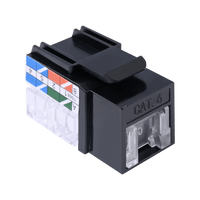
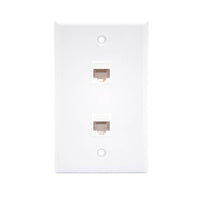
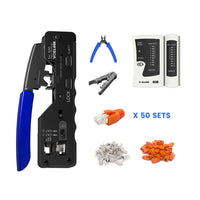
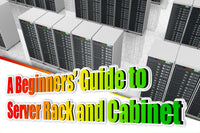

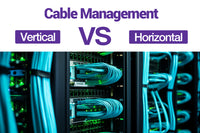
Be the first one to comment.
Leave a comment